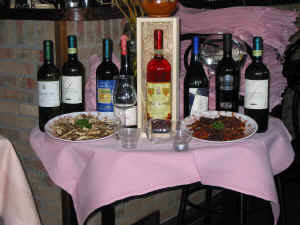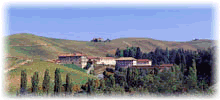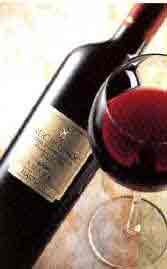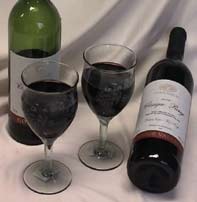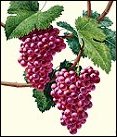 |
WINE ADVISOR |
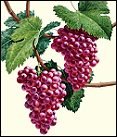 |
| Home | Wine areas | Wine bottles | Wine suggestions | Wine terms | Online wine shops | Links | |
||
Wine areas
Germany
German production is limited but enjoys a worldwide reputation. Its appellation features among the world finest wines in the in the world.
Three official wine-producing regions are listed in the west and the south of the country, near rivers, in the Rhine valley and its tributaries. The best known are Moselle, Rheingau and Palatinat. Dry white whine is produced there, but also semi-sweet wine and great sweet wine, all developed from classical grape varieties such as Riesling and sylvaner, or Hybrids from between the two of them, Müller-Thurgau and Scheurebe.
The wine is classified into three categories according to the sugar content of the grape must: landwein, Qualitätswein and Qualitätswein mit Prädikat.
Italy
Before France and long before Spain. the largest wine producer in the world, with nearly sixty million hectoliters. The rm climate, tempered by the seas, enables each of Italy's twenty regions to produce wine.
The Italian DOCs (Denominations of controlled origin) are similar to the French AOC.
Venice is known for its Soave. Bardolino and valpolicella. In Tuscani, the great wines are produced from Sangiovese grape. To the south of Florence, Chianti sold in straw-covered bottels, is always drunk young.Latium produces light wine from the Trebbiano and Malvoisie grape varieties.
Sicily has its famous Marsala dessert wine.
Spain
This country possesses the largest vine-planted surface area in the world. The vineyards are dispersed throughout the entire territory and offer an immense variety of wine, including thirty-nine DO (Denomination of origin - the Spanish appelation).
One distinguishes Manch, an extremely extensive vineyard, with the Valdepenas appelation; Levant with the Valencia, Utiel-Pequena, Jumila, Yecha, and Nicante appelations; Catalonia and its famous Panada wine (red,white and rosé) and Cavas wine (sparkling). In the upper valley of the Ebro and its world-famous vineyard, Rioja, the best wine is produced from the Tempranillo grape. The vineyards of Navarro and Ribera Del Douereo are also to be found in this region.
Finally, andalucia offers its famous aperitif wines: Malaga an especially sherry with its exceptionally disctinctive flavours.
Portugal
A complete range of wine is found here, the best known of which are Port and Madeira, exported throughout the entire world. The main wine-growing area is planted in terraces along the valleys of the Douro and the Mondego, in the north of the country. To the north-west Vinho Verde (green wine, that is to say young and lively) can be white, red or rosé.
The hinterlands of Lisbon produce the golden-coloured Moscatel De Setùbal, one of Europe's
most famous Muscats.
France
Alsace area
The wine-growing area is banked on the on the hillsides between Vosges and the Rhine Valley,between strasbourg and Mulhouse. A particularity whereas eslewhere they are called by the name of the vineyardterrain, in Alsace they are distinguished by the name of the original grape variety: Riesling, Gewürztraminer, Sylvaner, Zwicker...
Bordeaux area
The most famous of the French wine-growing areas is located around the Gironde, garonne and Dordogne Estuary. The classification of the red Médoc wine and the sweet Sauternes wine established in 1855 is still in application today. behind four premiers crus in red, (Margaux, Latour, Lafite-Rothschild and Haut-Brion), an exceptional premier cru in white (Yquem), Mouton-Rothschild and Saint-Émilion, fifty-seven different appellations share some 5 miilion hectolitres produced each year from more than 110,000 hectares.
The common denominator of Bordeaux wine is the judicious blending of several grape varieties. For the reds the Cabernet-Sauvignon and the Cabernet-Franc, tannic, ensure that it can be kept and the Merlot, supplier, contributes to its velvety character. For the whites, the lively Sauvignon rounds out the Sémillion and the Muscadelle, more delicate and sensitive to the noble rot.
Burgundy area
Every one of the prestigious wines from this regions is made from just one grape variety,
the Pinot Noir for the reds, the Chardonnay for the whites, and the Gamay for the Beaujolais.
The whites made from the Aligoté grape are more modest wines. One can count a number appellations spread throughout the 28,000 hectares of the wine-growing area. More than anywhere else, the notion of vineyard terrain here is in full force, asthe slightest difference of exposure, altitude or kind of ground can engender a different wine.To the north-west, Chablis and Yonne produce exceptiong among the premiers crus and the grands crus. Between Dijon and Chagny, the narrow Cote dÓr is divided into Cotes de Nuits, judicious mosaics of small lots (often calls climates) that give the great red wines, and Cote de Beaune, domain of the great white wines. To the south of Chagny streches the Cote Chalonnaise, consecrated essentially to red, then the Maconnais, recognised for its whites.
Still further south, Beaujolais is dived into Upper Beaujolais, land of the crus, and Lower Beaujolais with its fruitier wine and its Beaujolais Nouveaux.Cote du Rhone area
From the south of Burgundy, as far as Avignon, there is a sccession of steep, terraced vineyards. These world-renowned wines (Cote du Rhone, hermitage, Chateauneuf-Du-Pape) are made from Roussanne, Marsanne, Bourboulenc, and Clairette grapes for the white, and Syrah, Grenache, Cinsault and Mourvèdre for the reds.Languedoc-Roussilon area
Huge regions of wine production well impregnated with peasant authenticity. One finds a multitude of grape varieties there: Clairette, Mauzac, Picpoul and Muscat fir the whites; Carignan, Grenache and Mourvèdre for the reds.
Provence area
This sun-soaked region ripens its grapes on the coast of the Mediterranean. Some appellations stand out: Palette, Cassis, bandol, Bellet and Cotes de Provence.Jura area
One finds there Arbois in red and white, as well as the famous Chateau-Chalon Yellow wine and straw wine is also produced there. Grape varieties: Savagnin and Chardonnay for the whites; Poulsard,Trousseau and Pinot Noir for the reds.Champagne area
The Champagne wine-growing area, with its 20,000 hectares represents less than 2% of the French win-growing area. The best vineyards are stretched along the chalky slopes to the south of Reims. To the north and south of Epernay, they ascend the Marne Valley.Production includes "blancs de blancs" Champagne (coming from a singel white grape variety), pink Champagne (blending of white and black grapes), non-vintage Champagne (blending of several harvests), and vintage Champagne (in good years).
The Montagne de Reims (Pinot Noir grape variety) gives wine that is remarkable for its
strenght and body.The Marne Valley, to the north of Epernay (Pinot Noir grape variety) rounds and particulairy
tender wines.The Cotes des Blancs (Chardonnay graoe variety) produces almost exclusively fine and
delicate blancs de blancs.
NORTH-AMERICA
Wine is developed in the forty-five of the American states, the fourth largest producer
in the world. The coastal area produced the best wine. The best know comes from the
Napa Valley in California, a region that benefits from the relative coolnes of the
Pacific Ocean.
SOUTH-AMERICA
Introduced by the Spanish conquistadors, the vine is developed in the north and south of the
New World, starting from Mexico.The main wine-producing regions are scattered about the Cordilheiras of the Andes, especially in argentina and Chile. this last country enjoys an exceptional climate that combines admirable contrasts. Good quality production has enabled it substantially to increase its export in recent years.
Vineyards are also to be found in Colombia, Mexico, Peru, Brazil and Uruguay.
AUSTRALIA
This country offers a very partical style of wine that meets the needs of the market. These variety of wines, frank and fruity, of consitent quality, immediately ready for drinking, have enchanted a new population of consumers.
The wine-producing area is today concentrated at the south-eats and south-west of the continent along the coasts or river banks. The finest wine-producing regions are called Coonawarra, Barossa valley (to the north of Sydney), Margaret River and Hunter valleyto the north of Sydney.
SOUTH-AFRICA
Although some of its wine, such as the wine from Constance, have been well thought for
a long time in Europe, it is only recently that this southern country has made his entry
into the international market, after years of aberration followed by isolation. The main
production areas are located on the coastal plain.
Altough this is a lot of information, it is possible that some regions are not described here.
